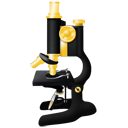Colour merge
| Colour merge (ImageJ) | |
|---|---|
| Author | unknown |
| Maintainer | |
| File | Colour_merge.class |
| Source | not found |
| Initial release | unknown |
| Latest version | unknown |
| Development status | unknown |
| Category | Color processing |
Purpose
This plugin allows you to merge two grayscale stacks into a single RGB stack. It is useful e.g. to merge a brightfield with the corresponding fluorescence image, or two different dye images of the same series.
Documentation
Adapted from the MBF ImageJ manual:
The Plugins › Color functions › Color Merge function gives the user the option of using the Difference arithmetic processing on the image stacks you select. This is not strictly a merge (when cyan and magenta merge they produce white, not yellow) but facilitates visualization of the separate channels (See Demandolx, D. & Davoust, J. (1997), "Multicolour analysis and local image correlation in confocal microscopy", Journal of microscopy 185: 21-36. You can perform a true merge if you turn off the “Difference” option.
Run the plugin and select the two images or stacks to be merged. It can be 8-bit, 16-bit, RGB... Select the desired colors from the drop-down options. <Current> uses the LUT that the image currently has (this is often the desired LUT). The “Difference” option performs a “difference” arithmetic operation rather than a “addition”. If the “Pre-sub 2 from 1” option is checked the second image is subtracted from the first prior to merging.
